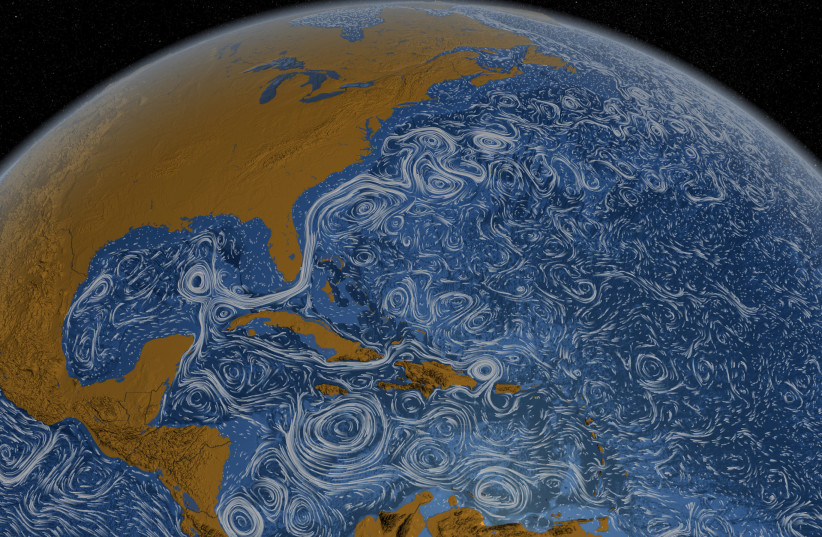The system of ocean currents in the northern Atlantic Ocean that distributes cold and warm water between the North Atlantic region and tropics is close to a tipping point and may collapse as early as the middle of the century, a team of scientists warned.
The dire prediction is the result of a study that was published on July 25 in the peer-reviewed scientific journal, Nature Communications, by researchers at the University of Copenhagen’s Niels Bohr Institute and Department of Mathematical Sciences.
The research team estimated through the use of statistical tools and ocean temperature data spanning 150 years, that the ocean current system known as the Thermohaline Circulation or the Atlantic Meridional Overturning Circulation (AMOC) will shut down if the level of greenhouse emissions continues at its current trajectory.
The timeframe given for this event falls somewhere between 2025 and 2095, with the highest probability given for the year 2057.
The report contradicts the latest IPCC report
These calculations contradict the message of the latest Intergovernmental Panel on Climate Change (IPCC) report, which declared that a change during this century of the thermohaline circulation as very unlikely.


“Shutting down the AMOC can have very serious consequences for Earth’s climate, for example, by changing how heat and precipitation are distributed globally. While a cooling of Europe may seem less severe as the globe as a whole becomes warmer and heat waves occur more frequently, this shutdown will contribute to increased warming of the tropics, where rising temperatures have already given rise to challenging living conditions,” said Professor Peter Ditlevsen from the Niels Bohr Institute.
“Our result underscores the importance of reducing global greenhouse gas emissions as soon as possible,” he added.
In the study, the scientists looked at the ocean surface temperatures in a specific area of the northern Atlantic Ocean, which can be seen as an early warning sign and indicate the strength of the AMOC. The strength of the current itself has only been measured directly for the past 15 years, so the temperature measurements can serve as an indication of long-term trends.
“Using new and improved statistical tools, we’ve made calculations that provide a more robust estimate of when a collapse of the Thermohaline Circulation is most likely to occur, something we had not been able to do before,” explained Professor Susanne Ditlevsen of the UCPH’s Department of Mathematical Sciences.
